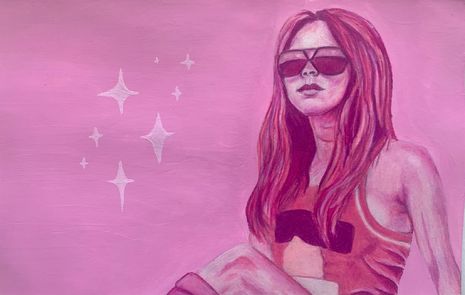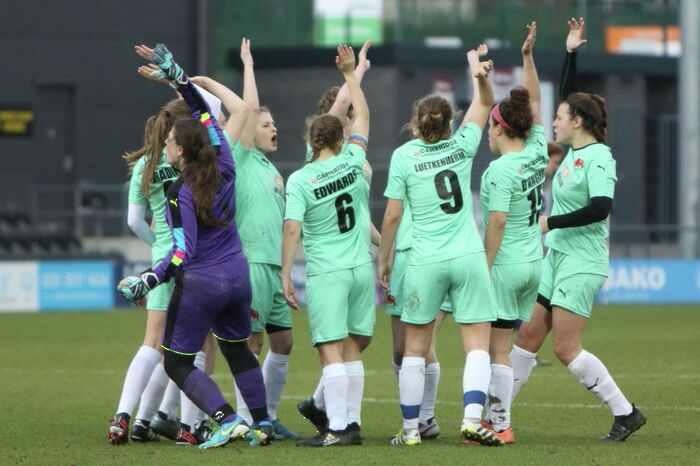The ways of a WAG
In the face of excessive negative press, Beth Wright talks about WAG culture and argues they should live their lives how they please.

With ‘Euro 2020’ set to start in less than 100 days, a dream for pub quiz question writers, most football fans’ attention will be on Jack Grealish, Kevin De Bruyne, Jadon Sancho and the chart position of ‘Its Coming Home’. However, if the 2006 World Cup is anything to go by, the tabloids will be most interested in the exploits of the England team’s wives and girlfriends, the WAGs. 2006 was the golden age of ‘WAG’ – Victoria Beckham, Cheryl Cole (née Tweedy), Coleen Rooney (née McLoughlin) and Alex Gerrard (née Curran) took to the streets of Baden-Baden and catalysed the country’s interest into a full-blown obsession. Why did it take this World Cup for the wives and girlfriends of the country’s footballers to become household names? Mediocre footballers had had other halves before this point, so why was 2006 the zenith of the WAG’s cultural dominance? What does it say about British culture, and what does the future look like for athletes’ partners now?
The WAG image was simple but effective: a shopaholic who converted her husband’s wages into vodka red bulls while dressed in a velour tracksuit and swearing at the press in a Scouse accent. The class of 2006 took this image and ran with it. Coleen Rooney flew out a tanning consultant and described a £57,000 shopping trip as just popping out for a ‘few bits and bobs’. Elen Rivas, the then-wife of Frank Lampard, tried to take five suitcases on the plane and was thus stuck in Stansted for a few extra hours, straws accessorised champagne bottles, and the then relatively unknown Abbey Clancy was flown home amid a cocaine scandal.
As the England squad tiptoed around a relatively unthreatening ‘Group B’, Elen Rivas leapt on the barely sticky tables of one of Baden-Baden’s few nightclubs, stilettos in tow, and performed I Will Survive (swiftly followed by a rendition of Super Frankie Lampard) while her peers put away €300 on Moet. By the time of England’s (far less enthralling) campaign, the WAGs had successfully built on their £26,000 room bills. Rives had spent £28,607, while Curran’s bill of £25,321 included 60 bottles of £75 pink champagne.
Unsurprisingly, the British (and global) press did not take kindly to seeing young girls have a good time on holiday. The Daily Mail branded the hotel Brenner’s as ′little Liverpool‘, exposed bra straps and G-strings were front-page worthy, and the European press sneered at these ’hooligans with credit cards’. Nights of sugar-laced champagne at Garibaldi’s had a nasty and prolonged hangover, as pundits blamed England’s less than inspiring performance on the women’s ‘distracting’ presence. Fabio Capello labelled them a ‘virus’ and banned them from flying out to South Africa in 2010, seemingly uninterested in Wayne Rooney’s red card inducing antics and Ronaldo’s ability to actually score a penalty.
“Much of the commentary on these women was poisoned with classism and misogyny.”
The tabloid commentary was the product of a perfect storm of celebrity culture, limited media legislation and rising footballer salaries. The 2000s saw the birth of a fascination with the ‘ordinary’ celebrity, uninterested and alienated from the elegant, diamond-encrusted, untouchable smiles of Julia Roberts, Keira Knightley and Nicole Kidman – the British public lapped up Cinderella stories tinted with fake tan.
Emerging from reality television and gossip columns, much of the commentary on these women was poisoned with classism and misogyny. Most of the WAGs of 2006 were working-class women, the childhood sweethearts of their school friends who had simply relocated their football matches from the playground to the stadiums of Europe, meaning their girlfriends maybe had a little more time and money to have fun with.
Much to the press’s jealousy, and disgust, these women did not hide themselves away with their consumption, quietly sitting on the sofa adorned with a silk scarf and pearls as they stared adoringly at the TV. Instead, they spent their money how they wanted to and as loudly as they wanted to. In a society looking to platform the athletic man, these women did not fit into their designated roles of homemaker and muscle/ego massager, and thus must be ridiculed.
“In a society looking to platform the athletic man, these women did not fit into their designated roles.”
In the 2010s, thanks to social media mastery and increased command over press scrutiny, photos of a young footballer’s wife are less likely to be splashed across the front pages. However, these women are increasingly expected to fit into a new Instagram-friendly homemaker role. Dressed in inoffensive beiges and advertising a new cleaning product on a crushed velvet sofa, these women escape abuse from the newspapers because they fulfil the supportive wife image that Victoria Beckham led her ladies out of in 2006.
Of course, the WAGs of today have been known to take social media into their own hands, with the infamous ′Wagatha Christie′ debacle of 2019, in which Coleen Rooney accused fellow soccer spouse Rebekah Vardy of leaking personal information to British tabloids. Rooney made the sensational allegation after apparently ensnaring Vardy in an Instagram sting – an operation worthy of the FBI.
Here’s to Coleen’s heirs applying the same energy of ownership over their image this summer when they can re-join a (hopefully) COVID-free world. I want to see a boomerang of Chloe Wealleans-Watts with multiple pornstar martinis and Kate Goodland doing a haul of her £80,000 shopping spree. Let the wives and girlfriends have fun whilst their spouses kick a ball about and David Baddiel and Frank Skinner’s bank accounts bloat. Let the world see evidence of this on their watch rather than under a vile, antiquated headline. Equally, bring on 2022, in which we can see the HABs (husbands and boyfriends) of the Lionesses strut their stuff around London - Birkin bags on their arms, of course.
 News / Cambridge bus strikes continue into new year16 January 2026
News / Cambridge bus strikes continue into new year16 January 2026 News / Uni members slam ‘totalitarian’ recommendation to stop vet course 15 January 2026
News / Uni members slam ‘totalitarian’ recommendation to stop vet course 15 January 2026 Science / Why smart students keep failing to quit smoking15 January 2026
Science / Why smart students keep failing to quit smoking15 January 2026 Interviews / The Cambridge Cupid: what’s the secret to a great date?14 January 2026
Interviews / The Cambridge Cupid: what’s the secret to a great date?14 January 2026 Comment / Will the town and gown divide ever truly be resolved?12 January 2026
Comment / Will the town and gown divide ever truly be resolved?12 January 2026









